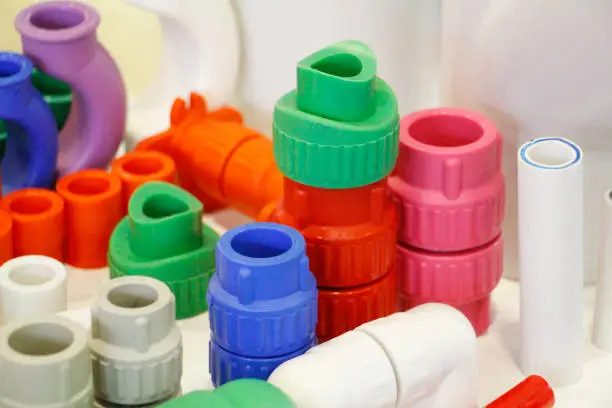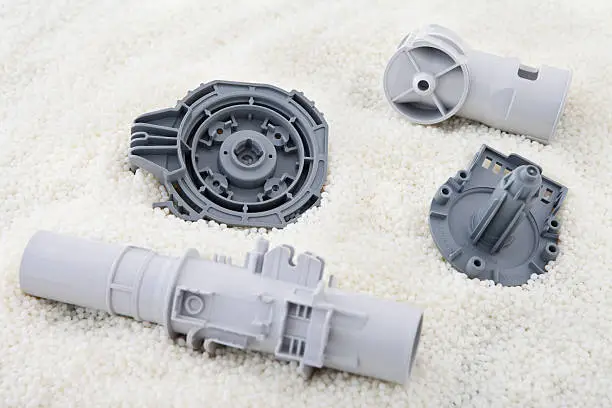
Acrylonitrile Butadiene Styrene (ABS) is a widely used thermoplastic polymer known for its excellent impact resistance, toughness, and ease of processing. Due to these superior properties, ABS is widely used in various industries, including automotive, medical, consumer electronics, and household appliances. The ABS injection molding process requires precise control over material handling, temperature, pressure, and cooling to ensure high-quality molded products. This article will cover the key steps, best practices, and solutions to common ABS molding defects to optimize manufacturing results.
Primary Keyword Focus: ABS Injection Molding Process
This guide will provide a detailed overview of the ABS injection molding process, including essential injection molding parameters, defect prevention, and post-processing techniques. Additionally, we will discuss the importance of ABS material drying and optimizing processing conditions to ensure superior product quality.
1. Properties of ABS for Injection Molding
ABS is an engineering thermoplastic with a balance of strength, rigidity, and processability. Some of its key characteristics include:
- High impact resistance and toughness for durable products
- Good dimensional stability to maintain part accuracy
- Strong resistance to chemicals and heat
- Excellent surface finish and paintability
- Good electrical insulation properties, making it ideal for electronic components
These properties make ABS ideal for producing automotive parts, electronic enclosures, medical devices, and household goods.
2. Pre-Processing: ABS Material Drying
ABS is hygroscopic, meaning it absorbs moisture from the air. Excess moisture in ABS can cause defects such as bubbles, silver streaks, และ poor surface quality in the final product. To prevent these issues, ABS must be thoroughly dried before injection molding.
- Recommended drying temperature: 80–90°C (176–194°F)
- Drying time: 2–4 hours
- Moisture content before molding: <0.05%
Using a desiccant dryer is the best approach to ensure optimal moisture removal from ABS granules, improving final part quality and reducing waste.
3. ABS Injection Molding Machine Selection
A standard screw-type injection molding machine is recommended for ABS processing. Key machine specifications include:
- Screw design: A general-purpose screw with a compression ratio of 2.5:1 to 3.0:1
- Shot size: Should match the required part weight to avoid material degradation
- Clamping force: Typically ranging from 50 to 500 tons, depending on part size
- Nozzle design: Free-flowing nozzle to prevent material clogging
4. Optimal ABS Injection Molding Parameters
a. Temperature Settings
Proper temperature control ensures uniform melting and prevents molding defects.
- Barrel temperature: 200–250°C (392–482°F)
- Nozzle temperature: Slightly lower than barrel temperature to prevent drooling
- Mold temperature: 50–80°C (122–176°F), depending on part thickness
b. Injection Speed and Pressure
- Injection pressure: 10–20 MPa (1450–2900 psi)
- Holding pressure: 30–50% of the injection pressure
- Injection speed: Medium to high to ensure proper flow into the mold cavities
- Back pressure: 0.3–4 MPa to ensure uniform melting
c. Cooling Time and Ejection
- Cooling time: 20–60 seconds depending on part thickness
- Ejection system: ABS parts should be properly cooled before ejection to avoid deformation
5. Common ABS Molding Defects and Solutions
1. Bubbles or Silver Streaks
- Cause: Excess moisture in ABS material
- Solution: Ensure proper drying before processing
2. Burn Marks
- Cause: Overheating due to high injection speed or prolonged residence time
- Solution: Lower the barrel temperature and adjust injection speed
3. Short Shots
- Cause: Insufficient injection pressure or low temperature
- Solution: Increase injection pressure and ensure proper melt temperature
4. Flashing
- Cause: Excessive injection pressure or improper mold clamping
- Solution: Optimize pressure settings and check mold alignment
6. Post-Processing for ABS Molded Parts
- Annealing: ABS parts may have internal stresses after molding. Heating the parts at 80–100°C (176–212°F) for 2–4 hours can help relieve stress and improve mechanical properties.
- Surface Finishing: ABS parts can undergo painting, plating, และ overmolding to enhance aesthetics and functionality.
7. Applications of ABS Injection Molding
ABS injection molding is widely used in various industries, including:
- Medical Industry: Equipment housings, diagnostic device components
- Automotive Industry: Dashboards, interior trims, and bumper components
- เครื่องใช้ไฟฟ้า: Laptop cases, keyboard frames, and remote controls
- Household Appliances: Vacuum cleaner parts, refrigerator liners, and tool housings
8. Why Choose XLD Mould for ABS Injection Molding?
At XLD Mould, we are committed to delivering high-precision ABS injection molding solutions that meet the most demanding industry standards. Our expertise ensures:
- Custom mold design and engineering for enhanced performance and efficiency
- Material selection guidance to ensure optimal functionality and durability
- Advanced injection molding process optimization to achieve consistent, high-quality results
- Comprehensive defect prevention strategies to minimize waste and maximize productivity
With our state-of-the-art manufacturing capabilities and a dedicated team of experts, XLD Mould guarantees superior ABS injection molding services tailored to your specific needs.
📞 Contact us today to discuss your ABS molding project and let us provide you with innovative, cost-effective injection molding solutions.

